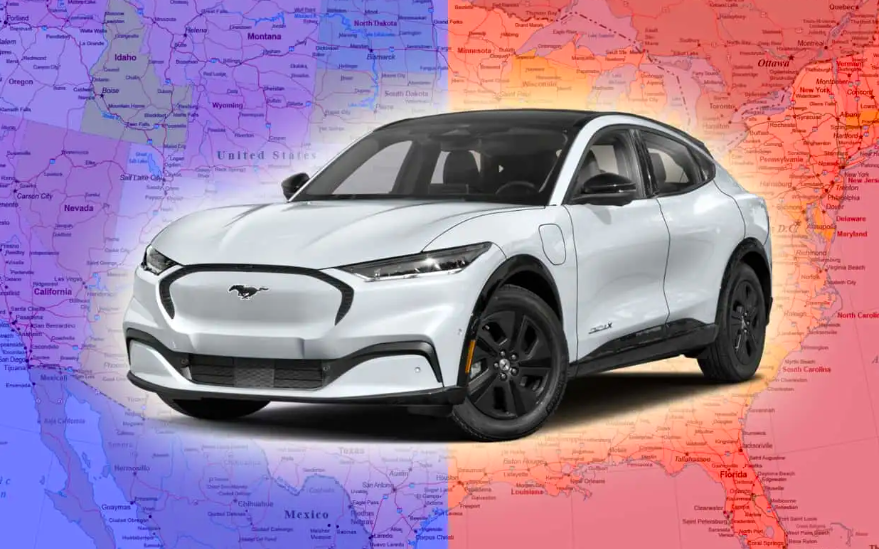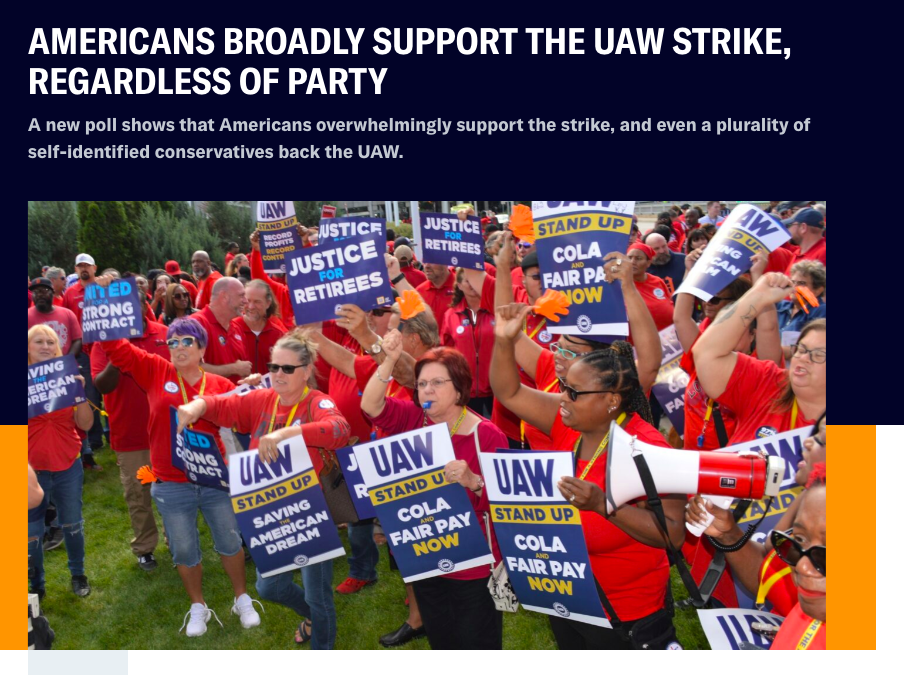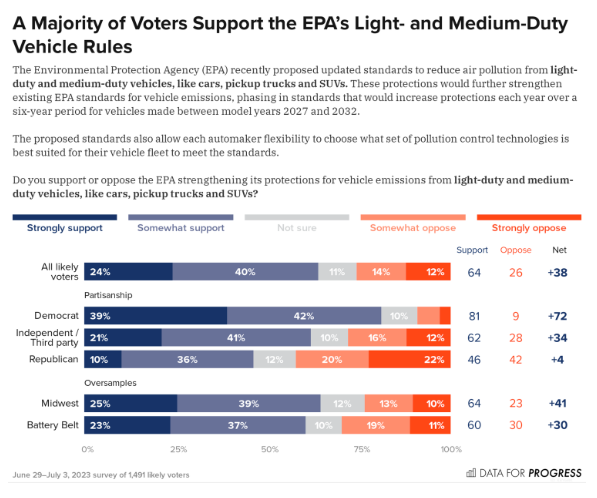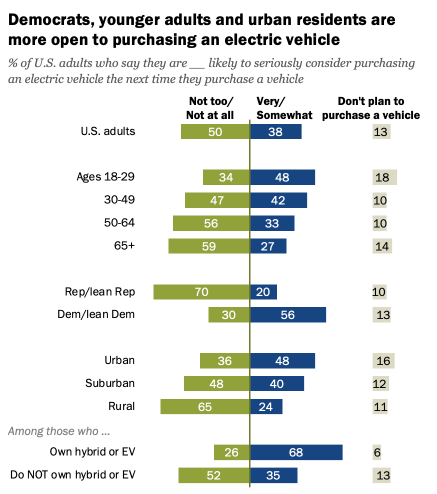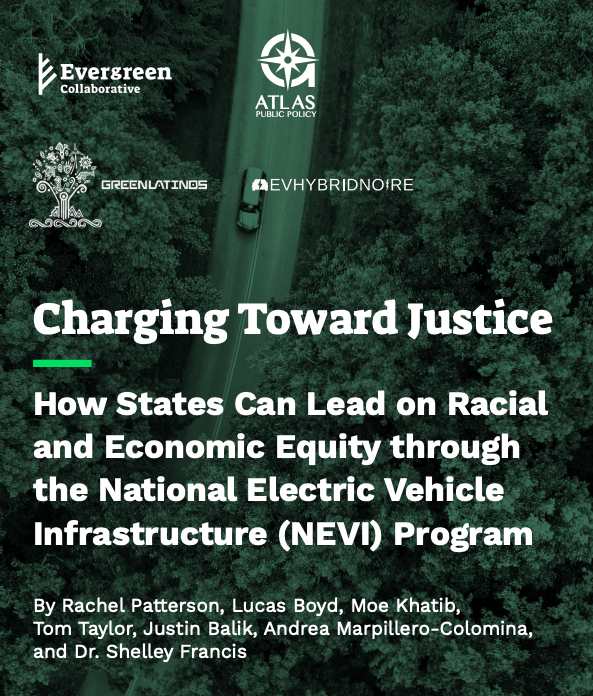Resources
Search below for resources covering the intersection of climate engagement, social science and data analytics.
RESULTS
EV Ownership Ticks Up, but Fewer Nonowners Want to Buy One
Roughly half of Americans say that they would consider an EV. The percentage of Americans who own EVs has increased in the past year, but so has the share who say that they “would not buy” one. 7% of Americans now report owning an electric vehicle, up three points from last March (4%). The percentage who are “seriously considering” buying an EV has dipped by an equivalent amount, from 12% down to 9%. Taken together, these two shifts suggest that there is a steady share of the population – roughly one-sixth of adults – who either own or are seriously in the market for an EV.
Environmental Polling Roundup - March 29th, 2024
This post includes climate and environment headlines, data points, and key takeaways from recent public polls - including new polling and research on the EPA's vehicle emissions rules, utilities, and people’s emotional responses to climate change.
HEADLINES
Environmental Polling Roundup - February 23rd, 2024
This post includes climate and environment headlines, data points, and key takeaways from recent public polls - including new polling on voters’ relative trust in the two parties to handle climate change and the environment, as well as new polling and consumer data about electric vehicles.
HEADLINES
Republican EV drivers outnumber Democratic EV drivers in many states, based on voter file data and vehicle records. In nine of the 31 states and DC that register voters by party, for example, more Republican voters are linked to records of electric vehicles – including insurance and repair records – than Democrats. Republicans, independents and third-party voters associated with electric vehicles also exceed Democrats in 24 of those states. There is a mix of market factors, such as consumer awareness, infrastructure, incentives and availability, that drive sales.
Poll: Here’s How To Get Republicans Behind Electric Vehicles
Cultural attitudes drive the partisan split on electric vehicles, as Democrats and Republicans disagree more about whether electric vehicles are for “people like them” than on any of the specific benefits or downsides of EVs. In this new survey of Americans with household incomes of $50,000 or more (intended to approximate the market for new cars in the U.S.), Democrats and Republicans have very similar answers when asked to name their two greatest concerns about owning an electric vehicle.
Poll: Limited Consumer Experience a Challenge and Opportunity for EV Adoption
7 in 10 Americans express some level of interest in buying or leasing an electric-only vehicle (EV). Among Americans who said they expect their next vehicle to be new, 38% said they would at least seriously consider getting an EV if they were to get a vehicle today. This however highlights a significant gap between consideration and actual purchases, as only around 7% of new vehicle purchases in 2023 were battery electric vehicles. Deeper analysis of the survey findings showed that overall consumer experience with EVs is very low.
Poll: Americans Broadly Support the UAW Strike, Regardless of Party
A new poll shows that Americans overwhelmingly support the strike, and even a plurality of self-identified conservatives back the UAW. 58% of likely voters said they support the strike as opposed to just 17% who opposed it. A plurality of Trump voters and Americans who self-identify as very conservative support the strike by a nearly 2-to-1 margin. Roughly 70% of Biden voters and voters who identify as liberal also support the UAW’s decision to strike. Among those expressing a clear stance on the strike, nearly 80% of respondents said they support it, including 80% of moderates and more than two-thirds of Trump and self-identified very conservative voters. Support for autoworkers cut across racial lines, but was strongest among Black voters, more than two-thirds of whom back the UAW strike.
Poll: Voters Support the EPA’s Proposed Vehicle Rules on Greenhouse Gas Emissions
Most voters approve of the EPA’s proposed new vehicle emissions standards when they learn about them. Charging concerns continue to rank as high as costs as a barrier to EV interest. 64% of voters support EPA’s new proposed light- and medium-duty vehicle rules. 72% support building electric vehicle plants in their state. Cost is no longer voters’ top concern regarding electric vehicles: 23% (the most-commonly cited reason) say there aren’t enough charging stations (compared to 22% who say EVs are too expensive).
Poll: How Americans view electric vehicles
Americans are skeptical that the country will build the infrastructure required for the electric vehicle transition. Americans express limited confidence that the country will build the necessary infrastructure to support large numbers of EVs on the roads. Some 17% say they are extremely or very confident this will happen, while 30% are somewhat confident. And 53% are not too or not at all confident. Half of U.S. adults say they are not too or not at all likely to consider purchasing an EV, while another 13% say they do not plan to purchase a vehicle. The share of the public interested in purchasing an EV is down 4 percentage points from May 2022. Democrats and Democratic-leaning independents, younger adults, and people living in urban areas are among the most likely to say they would consider purchasing an EV. The 9% of U.S. adults who currently own a hybrid or electric vehicle are also particularly likely to consider an EV for their next purchase. A majority of this group (68%) says they are very or somewhat likely to seriously consider it.
Charging Toward Justice: How States Can Lead on Racial and Economic Equity through the National Electric Vehicle Infrastructure (NEVI) Program
Deeper community engagement is important as states complete build-out of the initial electric vehicle charger deployment along highways. To do outreach to communities, employ a wide range of outreach strategies to disadvantaged communities, including social media, email lists, local media, and campaigns targeted specifically to communities of color (Black, Brown and Indigenous communities); hold a mix of virtual and in-person meetings, including within disadvantaged communities, to achieve broad geographic and demographic representation; consult with community-based organizations, especially those that represent disadvantaged communities, throughout the NEVI planning process; actively solicit feedback from disadvantaged communities through virtual and in-person meetings, listening sessions, public surveys, and recommendations from community-based organizations; and engage tribal nations, who were often entirely omitted from state NEVI planning but should directly benefit from the program.
Pagination
- Page 1
- Next page


